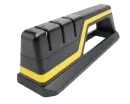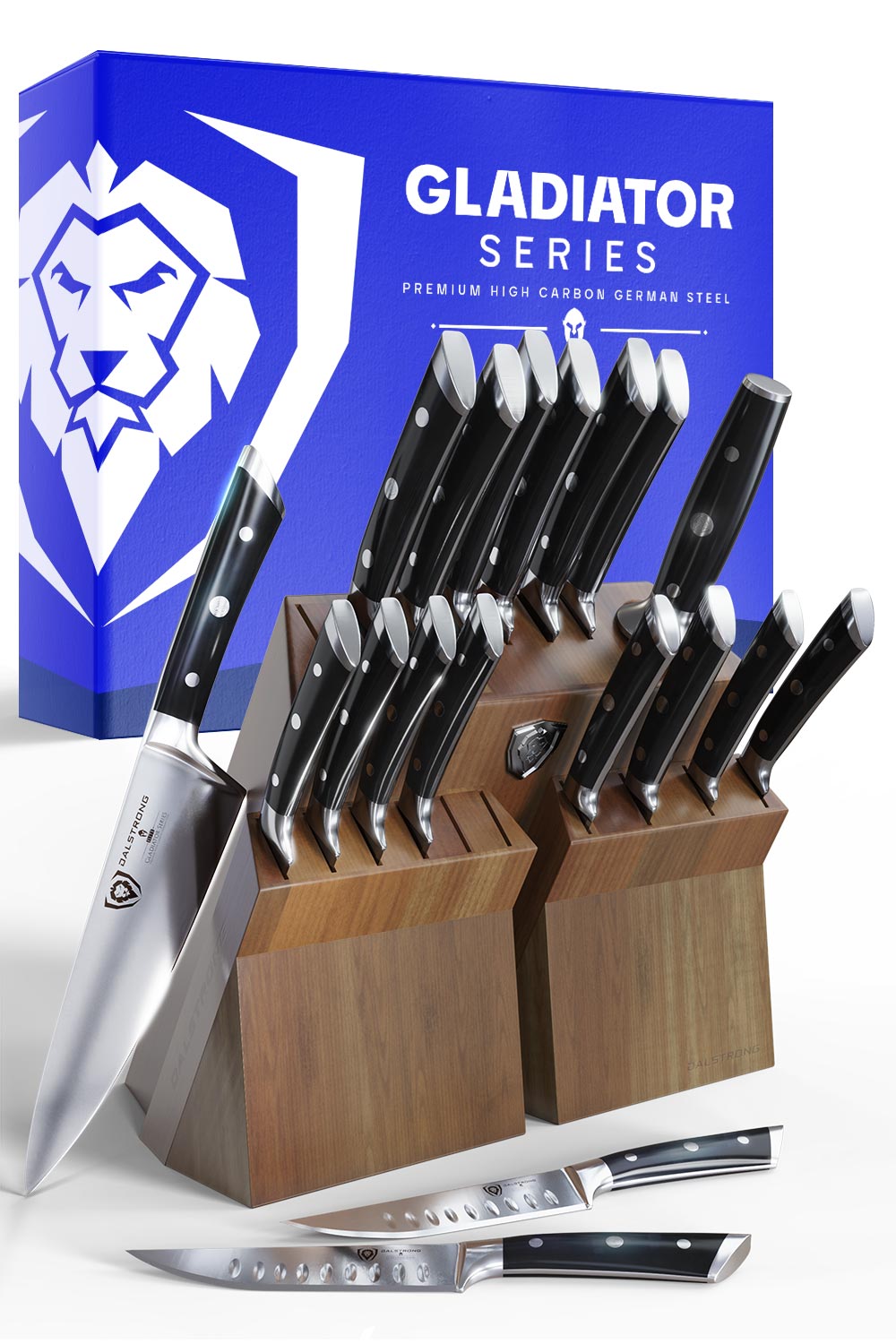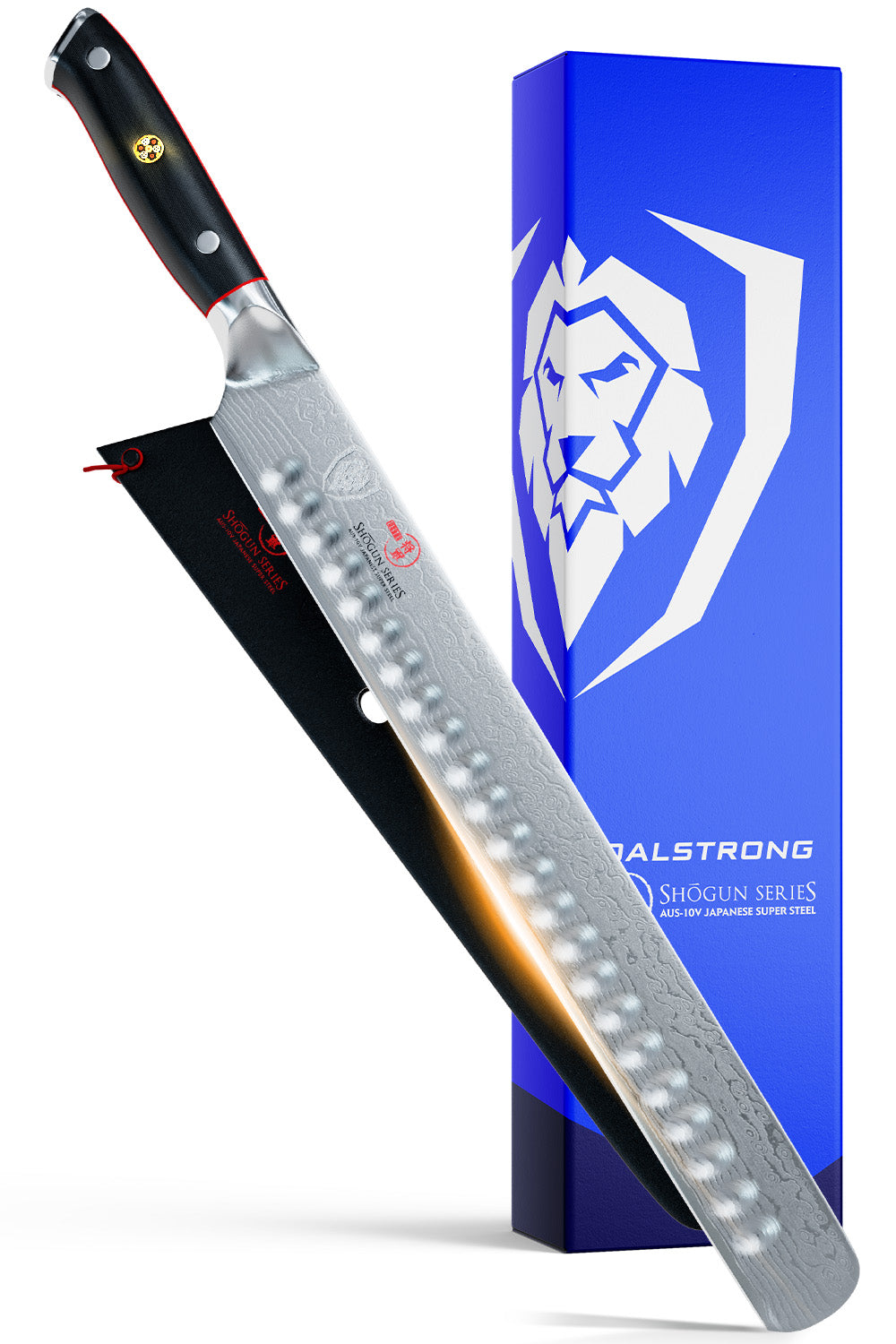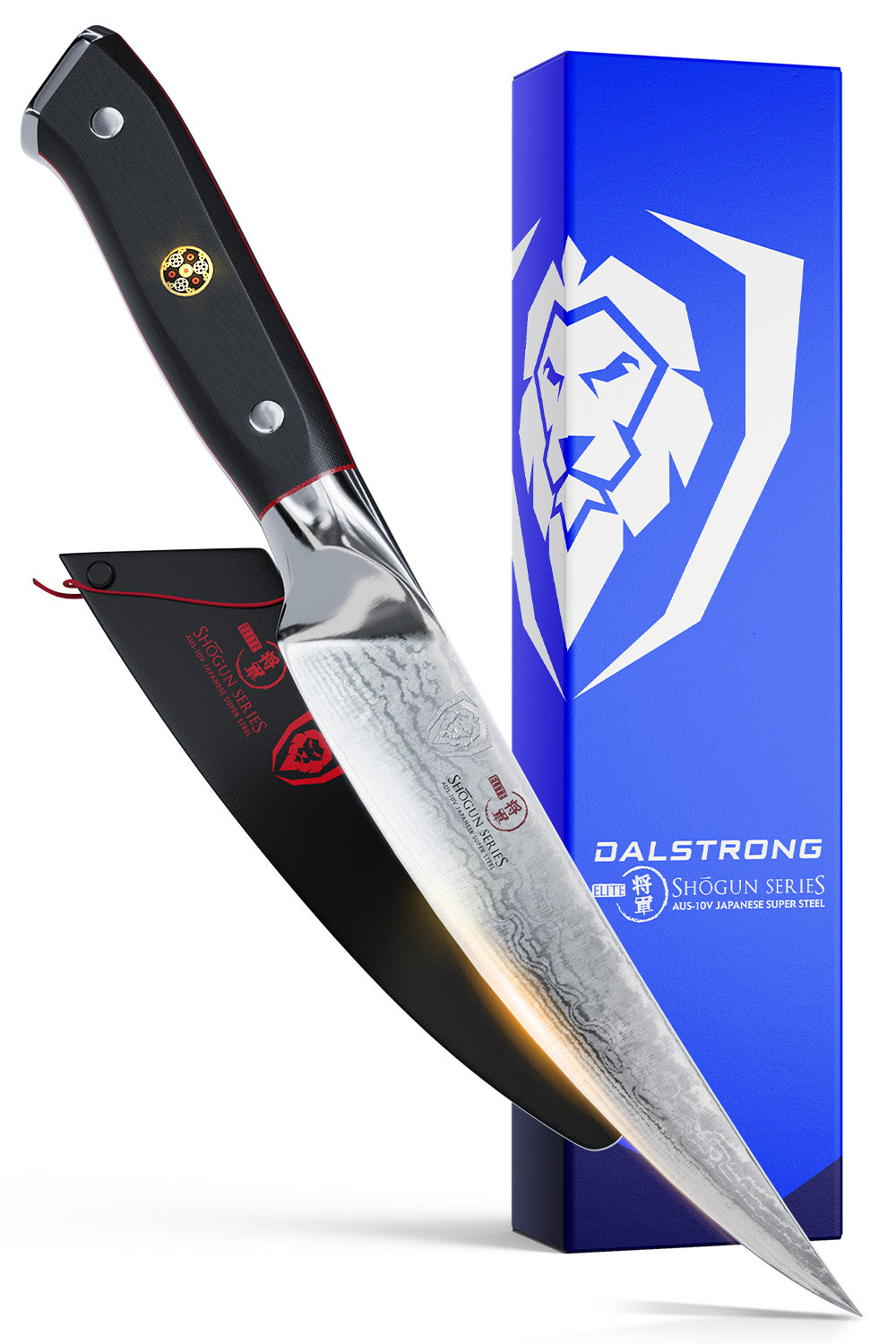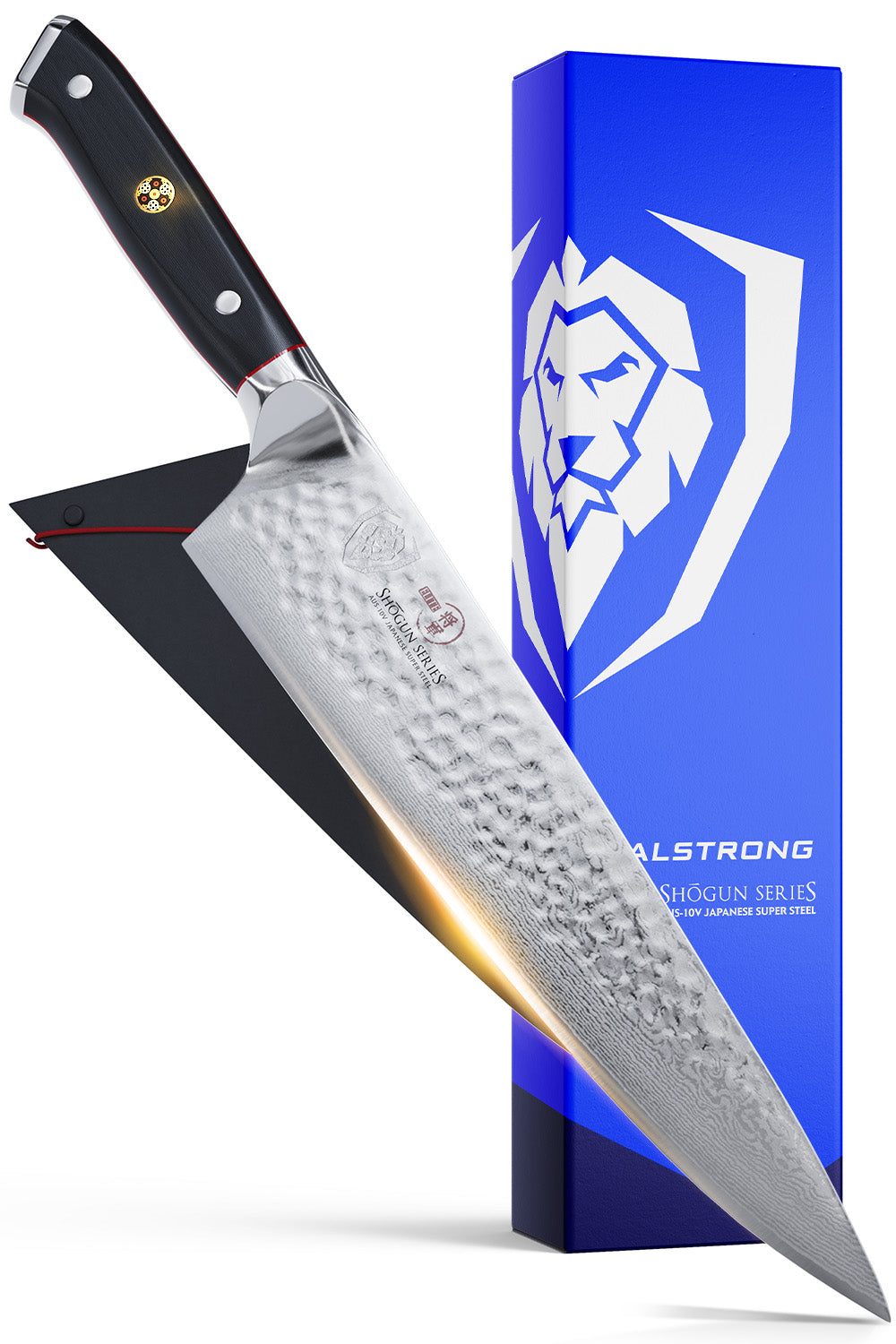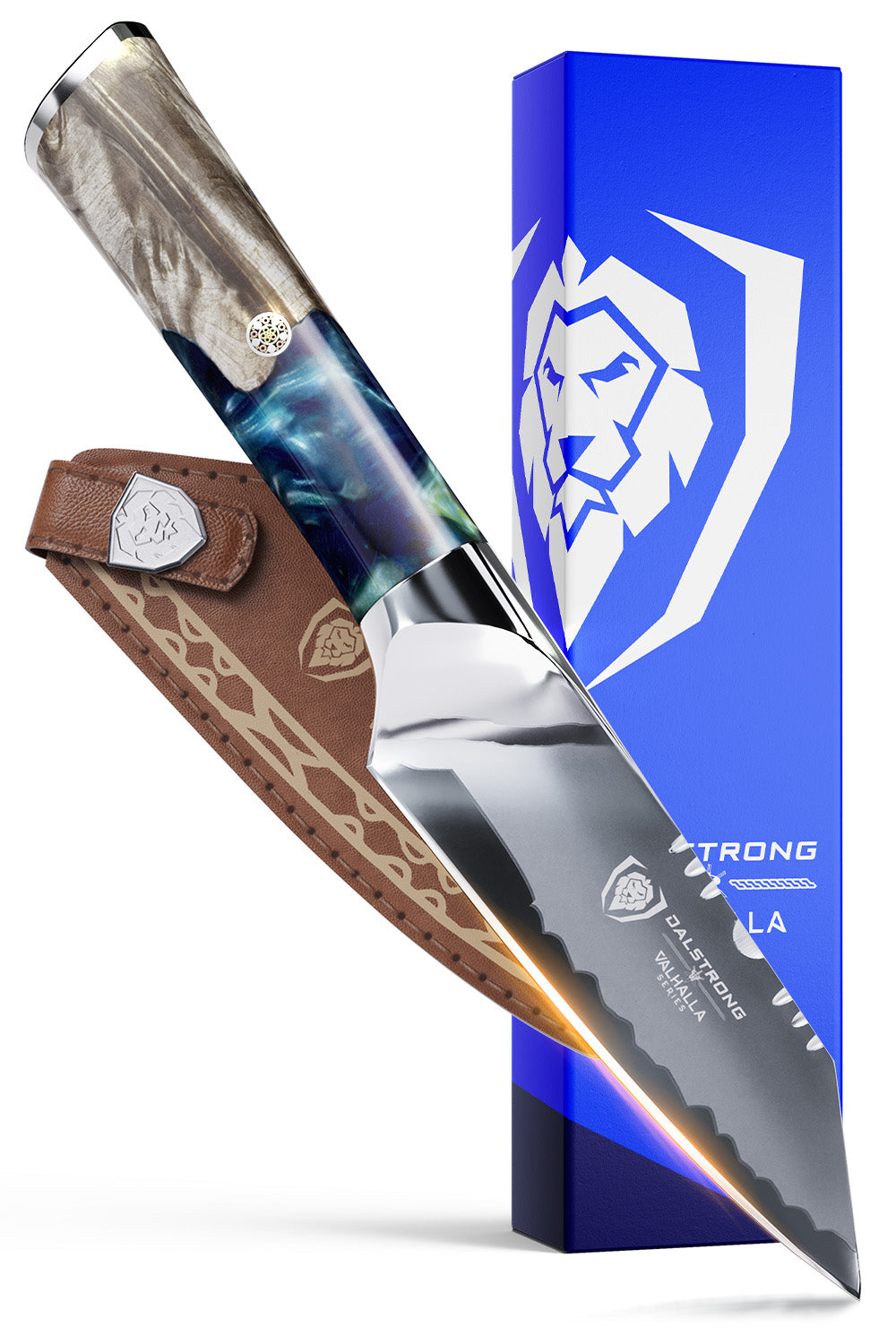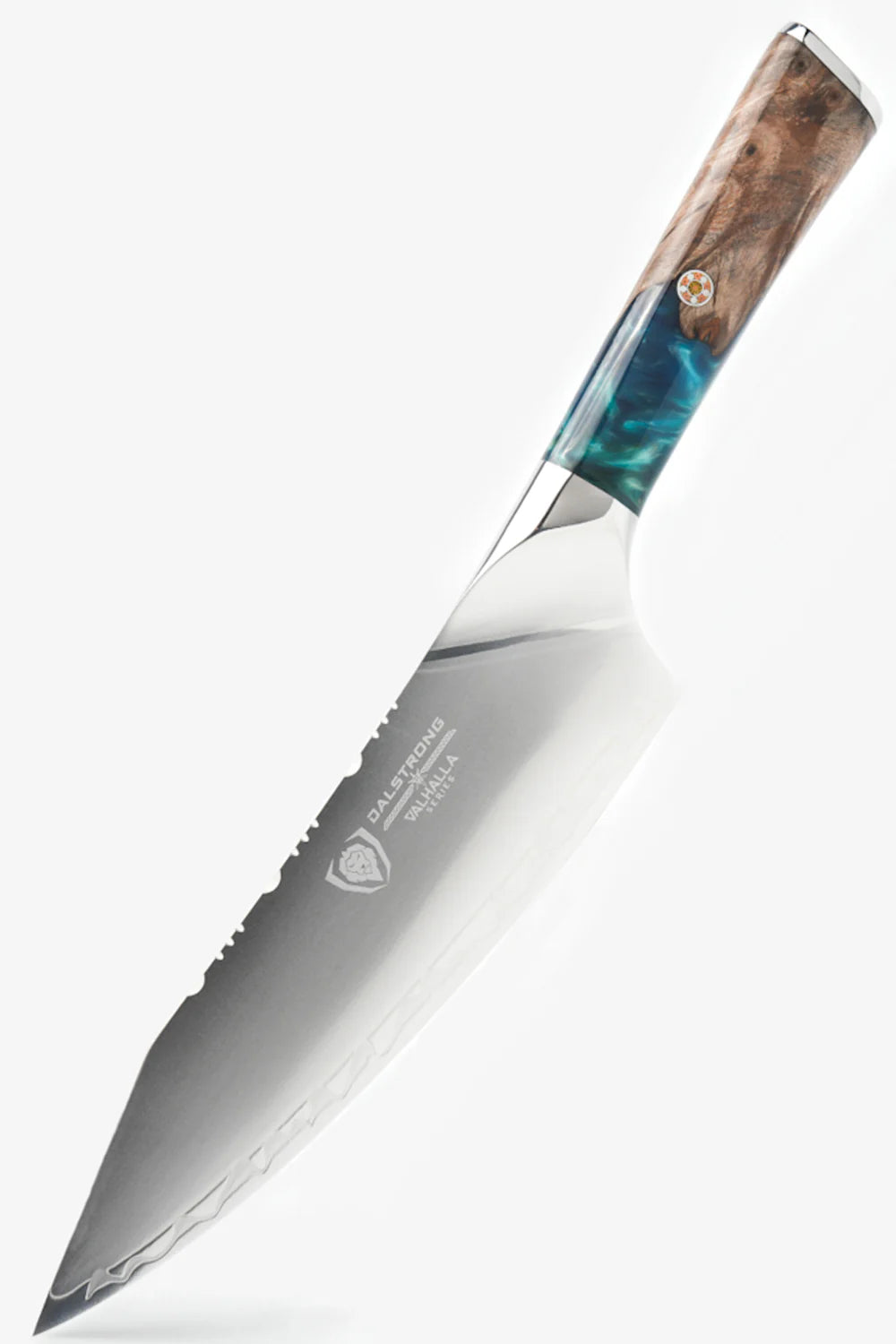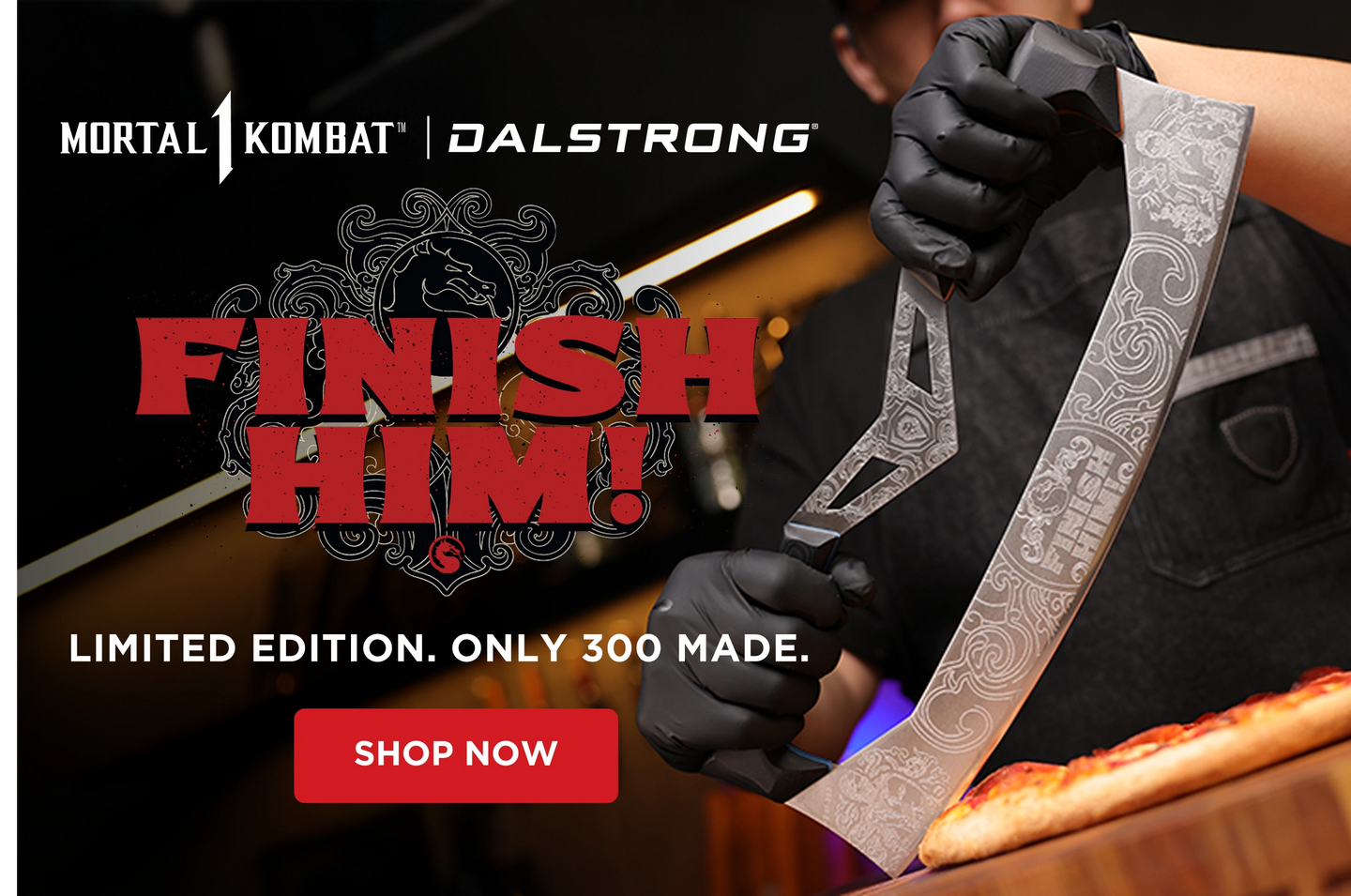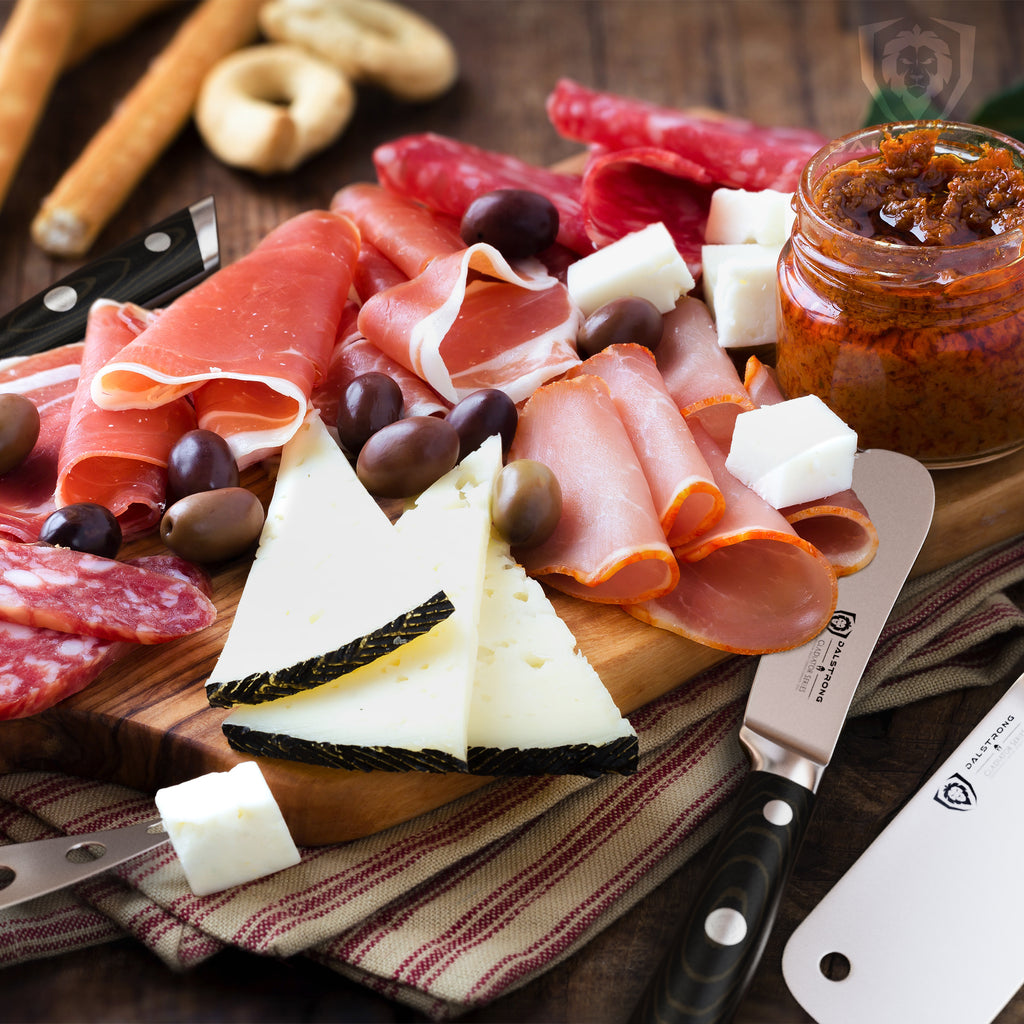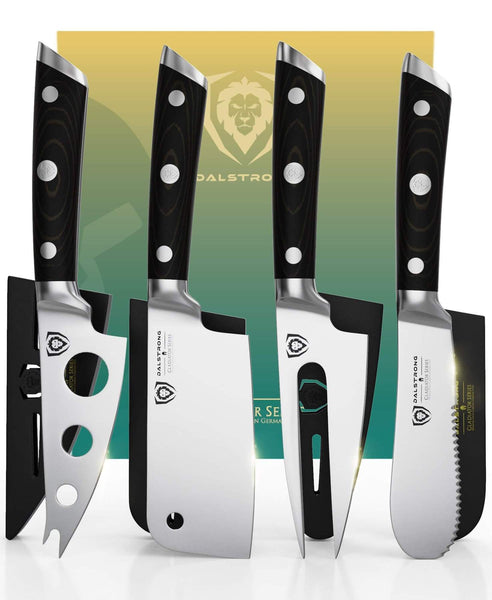What Is A Cheese Knife?
- It is a knife designed to cut, slice, or spread cheese.
- They are specifically designed to retain the cheese’s structural integrity.
- There are several types of cheese knives meant for different types of cheeses: hard, soft, and anything in between.
- Owning good cheese knives is a good way to get the most out of your charcuterie spread.

1. Charcuterie Is For Everyone

For the longest time, I perceived charcuterie as something decidedly foreign. A world away from what I would personally be able to serve guests at my home. It was something “fancy people” did. Fancy people who wore monocles and top hats and spoke in old English. Not me. I could never.
“Just look at all those fancy meats and cheeses,” I’d think to myself. “They’re cut in odd angles. They’re little nibbly triangles. The best I can do is slice my ham-and-cheese sandwich diagonally.”
Well, life seems to always be teaching me that I shouldn’t underestimate myself that way. Charcuterie doesn’t have to be something profoundly intimidating, or out of your grasp. It’s something we can all do and, with the right tools, craft an incredible experience for guests at our wine night.
First off, if you’ve never heard the term before, you’re probably extremely confused right now. A charcuterie board is an assortment of cured meats, various cheeses, olives, nuts, fruits, bread, and sometimes other morsels. They are presented in bite-sized cheese slices and laid out in an eye-catching, visually attractive way.
Charcuterie boards are a fantastic meal presentation that is inherently social -- people love to sit and have a chat in front of a beautiful spread, sharing some drinks and having a pleasant time. In fact, when I think of charcuterie now, that’s the first thing that comes to mind -- not stuffy Monopoly men, but the friends and laughter that have come from the times I’ve hosted such get-togethers.
And to make this get-together the best it can be, a good idea is to accompany it with the right tools. Charcuterie boards usually involve many cheeses, and cheeses are often pretty different from each other in terms of handling. So how can we stop our dinner party from turning into a messy free-for-all?
2. What Is A Cheese Knife?
Charcuterie & Cheese Knife Set | Gladiator Series | Dalstrong ©
If you’re in front of a charcuterie plate or a cheese plate, you’re probably going to do some cutting, slicing, and spreading. This is where a cheese knife comes in handy.
“A cheese knife?!” I hear you mock disdainfully. “Why would I need a special knife for cheese?”
Well, these may not be strictly necessary as far as your everyday kitchen tasks, so I would remove the word “need” from the equation. There are a lot of helpful knives you don’t technically need (think of a boning knife, or a paring knife). For most people, a chef’s knife is all they ever need.
But life is about more than just “need”! These are helpful accessories that are meant to optimize your dining experience. Make it as good as it can be. Sure, you could do with a regular old table knife, but that’s not going to treat your cheeses the best way.
Charcuterie boards or cheese boards are meant to be indulgent experiences where the food is savored in small servings, and texture is an important part of that equation. If you try to cut a hard cheese with a soft cheese knife, you’re going to run into some issues; it might chip away and fall apart. And that’s a waste of perfectly good cheese.
Cheese knives are made of different materials, but the best ones tend to feature a stainless steel blade.
Some of these cheese cutters are specifically designed to minimize issues like drag and stuck, and to cut cheese into the most optimal serving presentation. That said, there’s a lot of variety out there, so let’s talk about the different types of cheese knives, and which ones you should get.
3. Different Types Of Cheese Knives
Charcuterie & Cheese Knife Set | Gladiator Series | Dalstrong ©
If you’re even a little bit familiar with the world of cheese, you already know that there are almost as many cheeses as there are people. And these cheeses each have their own unique characteristics, not only when it comes to taste, but also texture. For this reason, there are several different types of cheese knives available.
The whole point of a cheese knives set is to make cutting (or spreading) easier while also preserving as much of the cheese’s structural integrity as possible, something that most regular tabletop utensils would probably damage. So each cheese slicer is designed with form and function in mind, and geared towards a different type of cheese.
Some of these knives are soft cheese knives, some of them are hard cheese knives. We’ll mention them and discuss what they’re for. We’ll start with the more common ones.
Soft cheese knife:
Also known as “open work blade knife.” If you’ve ever encountered this cheese knife before, chances are you’d remember. They are among the most common types of cheese knives. They are also very visually distinctive thanks to the holes on their surface, which are there to keep the soft cheeses from sticking to the blade surface.
Best for:
Soft to semi-soft cheeses, such as brie and fresh mozzarella.
Cheese cleaver:
As the name implies, this looks like a tiny meat cleaver, usually under 4 inches in length. It’s cute! It is also sometimes known as a “cheddar cheese knife,” or simply mini cleaver. This one is meant to cut hard cheeses, with a wide blade and cleaver shape allowing for force when cutting slices.
Best for:
Semi-hard to hard cheeses, such as cheddar, gruyere, and fontina.
Forked cheese knife:
These are multi-purpose tools, like a cross between a fork and a cheese knife. It allows you to cut a piece of cheese and then use its forked tips to pick it up for serving.
Best for:
Soft to semi-hard cheeses, such as brie and parmesan.
Cheese spreader:
This one is also known as a spatula knife. It’s meant for applying cheese spreads, as well as any other creamy or spreadable cheeses onto the pieces of artisanal bread on your charcuterie board or cheese board.
Best for:
Soft, spreadable cheeses, such as robiola, stracchino, and cream cheese.
Gorgonzola knife:
These are actually very similar to cheese spreaders, and some sets may use the terms interchangeably. However, gorgonzola knives feature a rounded blade with a sharp edge in order to cut through cheese rinds.
Best for:
Soft and semi firm cheese, such as bleu cheese and gorgonzola.
Slim blade cheese knife:
This is another type of cheese knife meant for soft and semi-soft cheeses. You’ll recognize it when you see it, it’s very thin and features a raided handle.
Best for:
Soft to semi-hard cheeses, such as boursault and camembert.
Flat cheese knife:
Also has a smaller variant called a “narrow plane knife,” it’s used to cut slices off aged cheeses, allowing the user to hold the blade vertically over the cheese and simply push downward.
Best for:
Semi-soft to hard cheeses, such as provolone, swiss, and gouda.
Parmesan knife:
Features a pointed edge that allows the user to break off chunks of hard and dry cheeses, as well as cut rinds open. You might see a version of the parmesan knife with an arrow-head type blade, and another more compact one resembling a shark’s tooth.
Best for:
Hard cheeses, such as parmesan and castelmagno.
Hard cheese knife:
This is the largest type of cheese knife. It’s meant to cut through a whole wheel of hard cheese into smaller portions. Some come with handles on both ends to allow for the user to apply even pressure from both sides.
Best for:
Hard cheeses, such as extra mature cheddar, provolone, or asiago.
Bonus: For those interested in a tomato knife - check out Dalstrong's Gladiator Series 5'' Serrated Tomato Knife.
Of course, there are other knife-related tools you’ll find in the market, such as cheese graters, cheese rind cutters, cheese wires, cheese planes, and more. We sure have found a myriad creative ways to interact with our cheese. But as far as knives go, those are the main ones you’ll come across.
As you can see, that’s quite a lot. And if you want to have a well-rounded arsenal of cheese knives in your kitchen, you might find yourself spending a pretty penny. This is why it’s best to buy a knife set that comes with a few strategic cheese knives to bump your charcuterie board an extra level.
4. The Best Charcuterie Knife Set
Dalstrong are proud to offer a wide variety of knife sets. From traditional ones like Steak Knives to more obscure ones such as the 4-Piece Charcuterie & Cheese Knife Set | Gladiator Series | NSF Certified.
A stunning collection of four powerhouse cheese knives that will more than satisfy all your cheese-cutting needs. These knives aren’t only incredible performers, they’re also absolutely stunning to look at, sure to inspire stunned awe when you whip them out at your next wine & cheese get-together.
As part of Dalstrong’s acclaimed Gladiator Series, these astonishing knives are meticulously handcrafted from a single piece of ultra-sharp, wear-resistant, high-carbon German steel (ThyssenKrupp) at a hardness of 56+ Rockwell. Each edge is hand-sharpened to 16-18° per side; that spells unbelievable performance and resilience.
All of these knives are full tang, which provides increased robustness. They are tempered for added durability, and feature a gorgeous satin finish blade. Not only that, but they come with a premium laminated G10 Garolite handle, featuring an ergonomic design for maximum comfort and grip. You won’t get sore from using these.
Additionally, these four knives are all extremely low-maintenance and easy to clean, and they are National Sanitation Foundation (NSF) certified. After finishing your cheese board, you won’t have to do a lot of work to clean up.
This handsome set comes with a 3.75” mini cleaver knife, a 3.75” forked cheese knife, a 3.75” soft cheese knife, and a 3.75” serrated cheese knife spreader. Everything you need for your next dinner party or charcuterie get-together.
This set also comes with a gorgeous PerfectFit Dalstrong Sheath for each knife, and it’s packed in Dalstrong’s renowned packaging. A truly premium-level product.
Purchasing them in a set like this is a fantastic move, as you’re getting four incredibly high-quality knives at a fraction of the cost of buying each one individually. It also makes a wonderful gift for the cheese lover in your life (even if that’s yourself).
5. How To Cut Cheese
Charcuterie & Cheese Knife Set | Gladiator Series | Dalstrong ©
Feel free to get the jokes about “cutting the cheese” out of your system. There. Feel better? Now we can proceed.
It’s strange to think about, but folks don’t really give much thought to cutting cheese, or doing it right. Every other aspect of culinary cutting is very painstakingly labored over, but cheese tends to be an afterthought for a lot of home chefs -- even though going about it wrong can result in a total collapse of our precious blocks of cheese.
Now that we’ve talked about the best tools you need to properly cut cheese, let’s talk about some techniques. Whether they be wheels, blocks, or wedges, you need to know what you’re doing or things are bound to end in disaster. Okay, well, “disaster” is being a bit dramatic, but you get our meaning.
Let’s talk about the best ways to get this cheese onto your cheese board.
Cutting blocks of cheese:
Your first move here is to cut the block in half to create two portions. Then, along the width of each rectangular portion, cut to create slices. There you go: a perfectly sliced block of cheese. You can also cut these slices diagonally into smaller triangles.
Cutting hard cheese wedges:
For harder cheeses, cut along with the width edge until you reach halfway up the wedge. Then you can simply cut along the length edge of the top half of the wedge.
Cutting soft cheese wedges:
Create a strip by cutting slices along the long edge of the cheese. Keep in mind that the tip (or nose) of the cheese wedge should not be cut, as that’s the piece with the most flavor.
Cutting wheels of cheese:
Just like with the block, you want to first cut it in half to make it two more manageable pieces. Then you can cut in a radial pattern resulting in cheese triangles. Some people cut out from the center of the wheel, but this can be messy and uneven if not done right.
Cutting a cheese log:
This one’s the simplest one: simply slice down the length of the log, resulting in little cheese discs. Fun!
6. Frequently Asked Questions

How is charcuterie pronounced?
The age-old question. I know I’m not the only one who cowered in fear the first time they had to actually say the word out loud. It looks intimidating, doesn’t it? Something about that precise combination of letters just screams “you’re going to mess up when you try to say this and look like a big dumb-dumb in front of all your suave, sophisticated friends.”
We’re here to help. The pronunciation of charcuterie, at least in American English*, is shaar-koo-tr-ee, emphasis on “koo.” Once you’ve read it out loud a few times, you’ll wonder why you were ever intimidated by it. It’s just a bunch of letters, after all. Now you can safely and confidently say the word out loud and sound exceptionally continental. Find a top hat and a monocle to complete the look.
*if you’re a fluent French speaker you’re probably screaming internally. All we can say is we’re sorry.
What does charcuterie mean in French?
Yes, as you might have guessed, “charcuterie” is indeed derived from the French. Specifically, it comes from the French words for flesh (“chair”) and cooked (“cuit”). Originally, the word was used to describe shops in 15th century France that sold pork products -- it evolved significantly from there, as words are wont to do.
What is a charcuterie board?
A charcuterie board is an assortment of meats (usually cured meats), cheeses, artisan breads, fruit, and nuts, artfully arranged on a serving board. The word “artfully” is important there -- one of the key aspects of charcuterie is that it’s a pleasing experience not just for your taste buds, but for the eyes as well.
What is typically on a charcuterie plate?
The components of a charcuterie plate will vary based on tastes and occasions, but most commonly they include cured meats such as prosciutto, salami, chorizo, pancetta, and the like. Another key component is cheeses, and you’ll usually find various types of cheeses on the “nicer” end of the spectrum.
Some charcuterie boards also include olives, whose bitterness contrasts nicely with the richness of the cheeses and meats. It’s also fairly common to find fruit, especially dried fruit like raisins or dates. Artisan bread is also a common element, though sometimes that’s substituted with crackers. You might see spreadable paté and even jam as well.
Why are there holes in cheese knives?
To match the holes in Swiss cheese! No, that’s a joke. Cheese knives are designed to cut through various cheeses with often very different textures. Soft cheese knives in particular have holes in them to keep some of the stickier types of cheese from clinging to the blade.
Are cheese knives necessary?
As we’ve established, not really. They are not necessary in the strictest sense, but they sure are helpful, just like other tools are helpful (think of a cutting board, for instance). With a good cheese knife, you’ll be able to maintain a cheese’s structural integrity (which is especially helpful when it comes to soft cheese). This brings us to our next question...
Can I use a regular knife to cut cheese?
Sure. You can use the “wrong” tools to do all kinds of things. Remember, the best knife is the one that’s in your kitchen. But if you want to make life a little easier for yourself, not to mention project the idea that you know what you’re doing when it comes to putting together a pleasant social gathering, you’ll get yourself a charcuterie knife set.
Shop Dalstrong Knives Today
Written by Jorge Farah
Born on the coast of Colombia and based in Buenos Aires, Jorge is a cooking enthusiast and kitchenware obsessive with a tremendous amount of opinions.

































